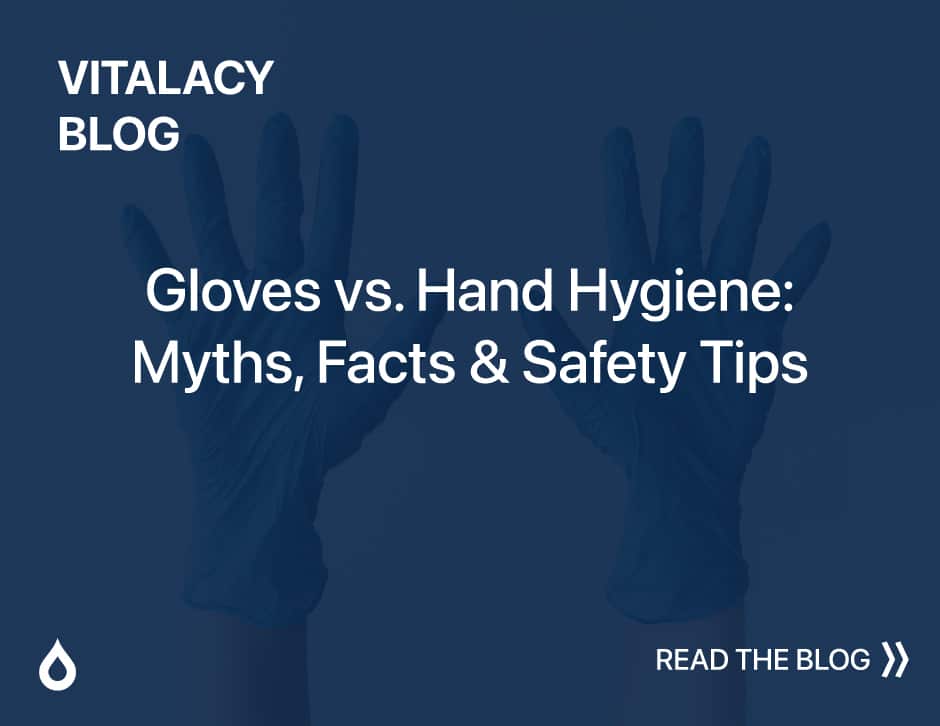
Sometimes a new more-powerful antibiotic is right under your feet. Dirt may be the answer to a new class of antibiotics scientists have named malacidins. In something as simple and everyday as dirt, researchers at Rockefeller University in New York, have found a new antibiotic that shows promise for wiping out some of our toughest most resistant microbes. Some bacteria such as Staphylococcus aureus (MRSA) has become resistant to traditional antibiotics. MRSA, a common hospital-acquired infection, has transitioned into a serious public health concern. Recently, new MRSA strains have emerged, causing severe infections in otherwise healthy people. Healthcare professionals need access to new antibiotics that can deliver the cures for these developing resistant strains.
Looking in New Places for Antibiotics
In the past, scientists have cultured most of our current antibiotics in the lab using bacteria. In fact, bacteria are the source of antibiotics. For example, streptomycin is an antibiotic produced from the bacterium Streptomyces griseus. But scientists have not had much success in producing new antibiotics this way. Sean Brady, and his research team at the Rockefeller University, decided to go out into nature for their search of a new antibiotic. Since bacteria produce antibiotics within the biome of which they exist, it seemed reasonable that with the advent of gene sequencing en masse, they could find new antibiotics in nature.
It was time to look elsewhere – somewhere in the global microbiome – soil. Brady and his researchers collected over 2,000 soil samples from the United States. Some of these soil samples arrived in their lab from scientists who had collected dirt samples from their own backyards. The team’s goal was to look for bacteria in all of the soil samples. It turns out that you don’t need much soil to find a lot of bacteria – in fact, in just a ¼ teaspoon (1 gram) of soil there are over 1,000 kinds of microbes. The researchers took the samples of dirt, separated out the bacteria from the soil, and then extracted the DNA from these soil-living bacteria.
Analyzing Gene Clusters
Next, the team analyzed the genetic sequences looking for gene clusters that were similar to calcium-dependent antibiotics. These are antibiotics that work by attacking bacteria where calcium is present, as part of the cellular function, usually by one of two distinct modes of action. They found that malacidin works differently – not by depolarizing the membrane or binding C55-P, but instead it seems to interact with lipid II in a calcium-dependent manner. The antibiotic vancomycin also binds lipid II, but the researchers found that the malacidins are active against both vancomycin-intermediate and vancomycin resistant pathogens. This is a great discovery since doctors use vancomycin as a last resort antibiotic. The research team had found a new class of antibiotic that attack bacterial cell walls in a different way than current calcium-dependent antibiotics. Yet, still in the presence of calcium.
The researchers then cloned the gene sequence with the calcium-dependent gene and injected it into a microbe to culture it. In this way, the microbes produced the malacidin antibiotic.
From these studies, the scientists believe that malacidins are more effective antibiotics because the bacteria cannot easily circumvent the process and become resistant. What they found was a new distinctive class of antibiotics they called malacidins (“killing the bad” in Latin).
Testing the Drug-Resistance of Malacidin
To test the drug resistance of this new antibiotic, they exposed bacteria to malacidin at sublethal levels for 20 days, and none of the bacteria tested showed signs of resistance. Another promising attribute.
Researchers found that these new malacidin antibiotics eradicate methicillin-resistant Staphylococcus aureus (MRSA) skin infections in laboratory rats. The malacidins are a broad-spectrum antibiotic, effective against Gram-positive bacteria, including multidrug-resistant bacteria. The scientists tested the efficacy of this new antibiotic, malacidin, in vivo, using rats. Since Staphylococcus aureus infection can occur on the skin, they applied malacidin topically to MRSA-infected wounds on the rats. They found it to be effective in killing the MRSA bacteria on the rat model. The malacidins were potent against Gram-positive bacteria that had become resistant to standard antibiotics – even in Gram-positive bacteria that vancomycin, a last resort antibiotic used clinically today.
More Research in the Dirt
Although more studies must be done before malacidins can be used on humans, this is promising news for the illnesses that have become resistant to standard antibiotic therapy. One thing for sure, scientists have access to a wide range of dirt samples throughout the country. With current research techniques of DNA sequencing, bioinformatic analysis, and heterologous expression of biosynthetic gene clusters, researchers shall continue to capture DNA extracted from environmental samples such as the dirt under your feet.
Brady and his team of researchers confirmed their hypothesis that calcium-dependent antibiotics are a larger family of antibiotics with diverse modes of action in killing bacteria that has become resistant to other modes of treatment. These new antibiotics show promise of circumventing multi-drug resistant gram-positive pathogens. As genetic science progresses, researchers have access to analyzing DNA that has previously been hidden.
Send in Your Dirt — Sign up
Professor Sean Brady at Rockefeller University, is interested in dirt and soil from other parts of the country. But instead of trying to culture natural antibiotics in the lab, he is requesting that the community get involved by sending in samples of the dirt from your backyard.
If you want to participate in this project, here is the website: Drugs from Dirt
References
https://www.ncbi.nlm.nih.gov/pubmed/29434326
https://www.nature.com/articles/d41586-018-01931-4
Deila Taylor received a bachelor’s degree in biochemistry from Occidental College, an MEd specializing in E-learning, and graduate work towards a Ph.D. in pharmacology and nutrition at the Keck School of Medicine of the University of Southern California. She has been published in The Nest, Livestrong Nutrition, and San Francisco Gate Healthy.
Author
-

Vitalacy is committed to reducing patient harm in healthcare through better hand hygiene and patient safety solutions. Bluetooth-enabled smart sensors and wearables help improve outcomes and Leapfrog Hospital Safety Grades.
View all posts




